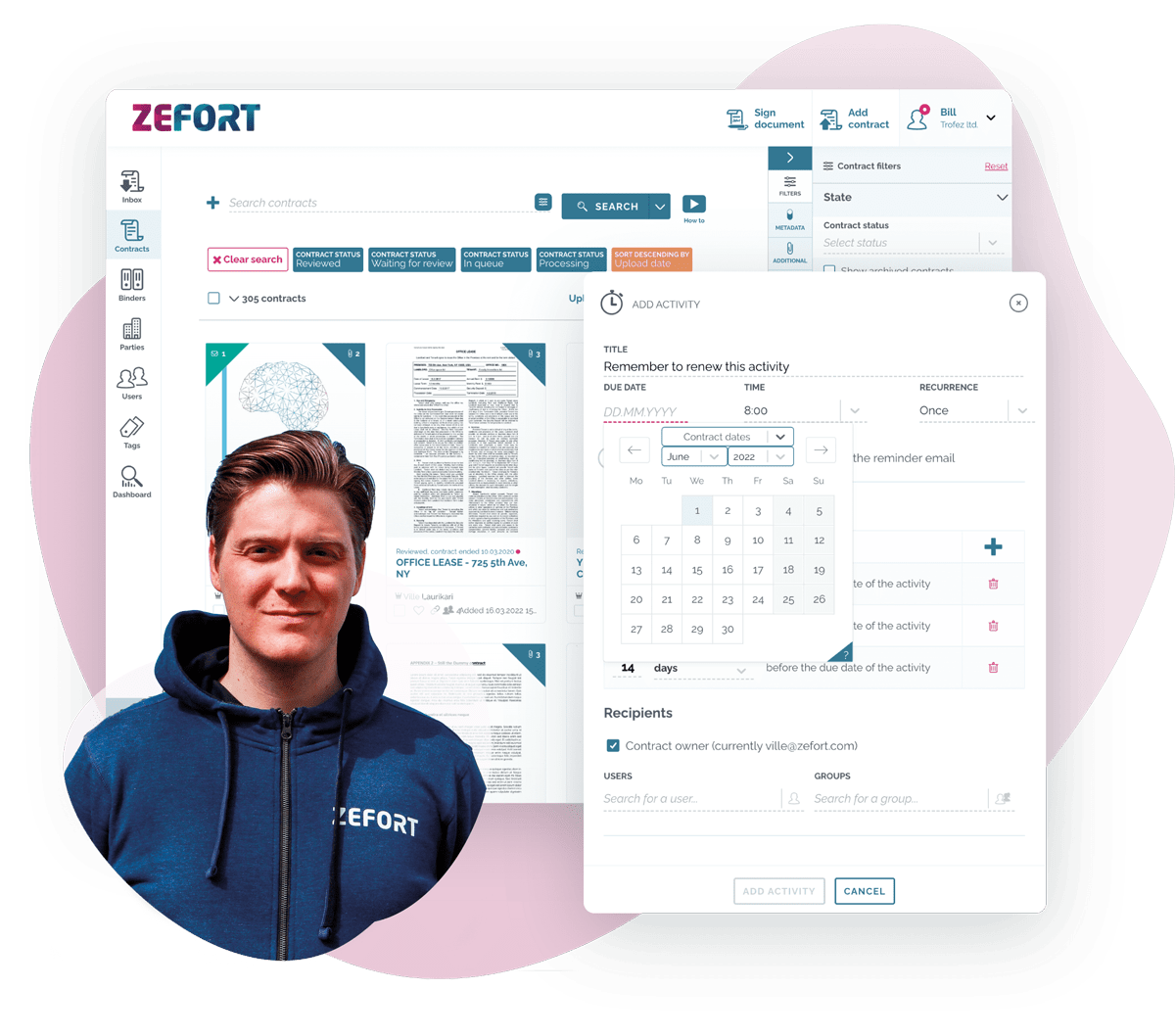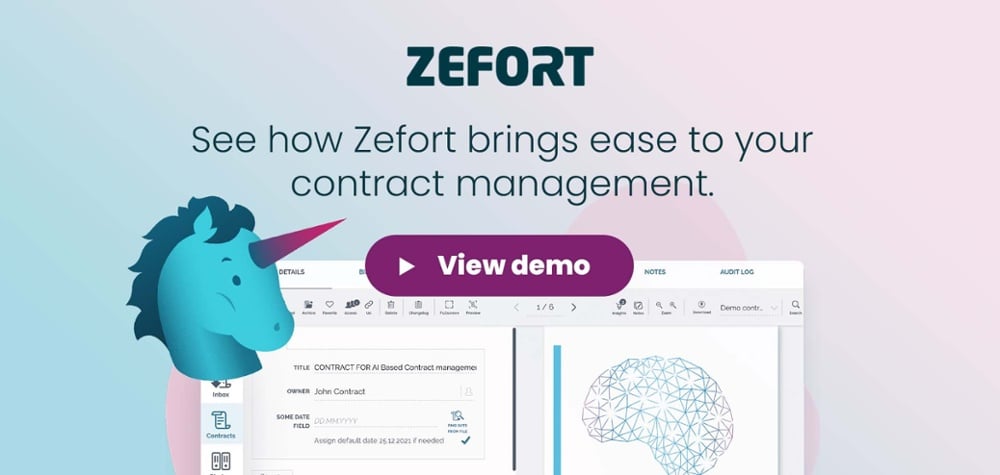Unlocking Growth: Scaling Your Legal Team Using Modern Legal Technology
Are you tired of your legal team’s growth being stifled by outdated processes and manual work? It’s time to unlock the full potential of your legal department by embracing modern legal technology. With the right tools and automation at your fingertips, scaling your legal team becomes less of a challenge and more of an opportunity for exponential growth.
In this article, we will explore how modern legal technology can revolutionize the way your team operates, empowering you to meet the ever-increasing demands of a rapidly evolving legal landscape. Say goodbye to paperwork overload and hello to a lean, efficient, and future-proof legal team. Let’s dive in!
The importance of scaling your legal team
Scaling your legal team is crucial because it allows your organization to efficiently handle a growing workload and prevent bottlenecks in legal processes.
As your business expands, a larger legal team can provide the necessary support to navigate complex legal issues and ensure compliance with regulations and laws.
By scaling your legal team, you can gain access to diverse expertise and skill sets that will help address a wide range of legal challenges and mitigate risks effectively.
An expanded legal team can also enable faster response times, increasing the efficiency of legal operations and avoiding delays in contract management or litigation.
Scaling your legal team ensures that you have the necessary resources to handle increased legal demands, promoting organizational growth and success.
Benefits of using modern legal technology
There are several benefits of using modern legal technology.
First, it helps to streamline legal processes by automating repetitive tasks, allowing lawyers and legal professionals to focus on more complex and strategic work.
Second, it enhances communication and collaboration among legal teams, clients, and stakeholders by providing efficient platforms for sharing information, documents, and updates.
Third, modern legal technology enables better organization and management of vast amounts of data, making it easier to search, analyze, and retrieve relevant information.
Fourth, it improves document management and workflow, reducing the time and effort spent on manual document processing.
Fifth, it enhances research capabilities, providing access to extensive legal databases and resources, resulting in more accurate and comprehensive legal analysis.
Finally, modern legal technology increases efficiency and productivity, ultimately leading to cost savings for law firms and clients.
Understanding Modern Legal Technology
Definition and overview of modern legal technology
Modern legal technology refers to the advanced tools and software used in the legal industry to enhance efficiency and effectiveness. It encompasses a wide range of technologies, such as artificial intelligence, machine learning, cloud computing, and blockchain. These technologies are employed to streamline various legal processes, including document management, research, case analysis, and client communication.
With the help of modern legal technology, lawyers can automate repetitive tasks, reducing the time and effort required for legal work. For instance, document automation software enables the creation of legal documents in a fraction of the time it would take manually. Additionally, AI-powered chatbots can provide instant responses to common legal queries, freeing up lawyers to focus on more complex issues.
The use of machine learning algorithms and data analysis tools in legal research allows for quicker and more comprehensive information retrieval. By utilizing large databases and legal repositories, these technologies can assist legal professionals in finding relevant case precedents, statutes, and legal opinions faster than traditional research methods.
Cloud computing plays a crucial role in modern legal technology by providing secure and accessible platforms for storing, sharing, and collaborating on legal documents. This allows lawyers to access their files from anywhere, facilitating remote work and increasing overall productivity.
Furthermore, blockchain technology offers enhanced security and transparency in legal transactions. It can be used for secure digital signatures, verifying the authenticity of legal documents, and ensuring secure transfers of assets.
Key features and functionalities of modern legal technology
Modern legal technology has several key features and functionalities that play a crucial role in improving efficiency and effectiveness within the legal profession. These advancements include document automation, which simplifies the process of creating and managing legal documents, saving valuable time and effort.
Additionally, legal research tools provide practitioners with quick access to vast legal databases, enabling them to efficiently search for relevant case law and statutes. Another noteworthy feature is e-discovery, which aids in the identification, collection, and organization of electronic evidence, streamlining the litigation process. Furthermore, cloud-based platforms facilitate secure collaboration and remote work, enabling legal professionals to access and share files conveniently.
Additionally, practice management software helps law firms streamline their operations, including client management, time tracking, and billing. Lastly, artificial intelligence-powered tools assist with tasks like contract analysis, enabling accurate and efficient contract review and management. These advancements in legal technology significantly enhance productivity and assist lawyers in delivering high-quality work.
Scaling Your Legal Team with Modern Legal Technology
Finding the right legal technology solutions
- Determine your goals: Clearly define the purpose of seeking legal technology solutions. Identify the specific problems or tasks that need to be addressed, such as streamlining processes, improving efficiency, or enhancing communication.
- Assess your requirements: Take stock of your organization’s specific needs and challenges. Consider factors like the size of your team, budget constraints, and existing software or tools. This evaluation will help you pinpoint the essential features and functionalities required from a legal technology solution.
- Research available options: Explore the wide range of legal technology solutions available in the market. Look for software or tools that align with your goals and requirements. Consider factors such as ease of use, scalability, integration capabilities, and customer reviews.
- Seek recommendations: Consult with peers or colleagues in the legal industry who have implemented similar solutions. Their firsthand experience and feedback can provide valuable insights and help narrow down your options.
- Conduct demos or trials: Before committing to a particular legal technology solution, request a demonstration or trial period. This will allow you to assess the software’s usability and suitability to your organization’s needs.
- Evaluate costs and benefits: Consider the total cost of ownership, including any upfront fees, ongoing subscription or maintenance charges, as well as potential savings or improvements in productivity that the solution could bring. Determine if the benefits outweigh the investment.
- Ensure data security and compliance: Verify that the legal technology solution complies with industry-specific security and data protection regulations. Confirm that it offers robust security features like encryption, secure access controls, and regular software updates.
- Confirm technical support and training: Assess the level of technical support and training provided by the solution’s vendor. Check for availability, response times, and customer satisfaction ratings. Adequate support and training are crucial for successful implementation and user adoption.
- Consider scalability and future needs: Choose a legal technology solution that can accommodate your organization’s growth and evolving requirements. Determine if the software can seamlessly integrate with other systems or if it offers additional features or modules that can cater to your future needs.
- Obtain user feedback: Collect feedback from your team members or key stakeholders who will use the solution. Consider their opinions, suggestions, and concerns to make an informed decision and ensure that the chosen legal technology solution aligns with their workflows and preferences.
- Plan implementation and migration: Develop a detailed implementation plan, including timelines, resource allocation, and potential risks. If migrating from existing systems, ensure a smooth transition by developing data migration strategies and contingency plans.
- Monitor and reassess: Continually monitor and assess the performance and effectiveness of the implemented legal technology solution. Gather user feedback and make necessary adjustments to maximize its benefits and address any issues that arise.
Remember, finding the right legal technology solution is a dynamic process that requires thorough research, thoughtful consideration, and active involvement from key stakeholders.
Implementing and integrating legal technology into your workflow
Implementing legal technology involves incorporating electronic systems and tools into your work processes to streamline and enhance productivity. It entails adopting software, applications, or platforms specifically designed for legal professionals to perform tasks more efficiently.
Integrating legal technology means seamlessly merging these tools into your existing workflow, ensuring that they complement and augment your current work methods. This entails identifying the areas where technology can make an impact, such as contract management, case research, document drafting, or even communication with clients and colleagues.
By implementing legal technology, you can automate repetitive tasks, minimize errors, improve organization, and increase collaboration among team members. This helps you save time, reduce costs, and deliver higher quality work.
To integrate legal technology successfully, start by selecting the right tools that align with your needs and objectives. Next, ensure your team receives proper training to utilize the technology effectively. Additionally, consider any necessary adjustments to your existing processes to fully harness the capabilities of the technology.
Keep in mind that implementing and integrating legal technology requires a balance between technological advancement and human expertise. While technology can bring immense benefits, it is crucial to strike a harmonious synchronization between the two, ensuring it serves as a valuable tool to improve your workflow rather than merely replacing your expertise.
Maximizing Efficiency and Productivity
Automating repetitive tasks
Automating repetitive tasks refers to the use of technology to streamline and complete repetitive tasks automatically, instead of relying on human intervention. It involves creating systems or tools that can perform these tasks efficiently, saving time and effort. By automating such tasks, individuals or organizations can maximize productivity and focus on more complex or meaningful work.
Streamlining communication and collaboration
Streamlining communication focuses on making the exchange of information more efficient and effective. It involves eliminating unnecessary steps or barriers that hinder the flow of communication between individuals, teams, or departments. By streamlining communication, organizations can improve productivity, reduce misunderstandings, and enhance overall teamwork.
Collaboration streamlining aims to simplify and optimize the process of working together. It involves implementing tools, strategies, and structures that facilitate seamless collaboration among team members. This allows individuals to share ideas, coordinate efforts, and jointly work towards shared goals in a more streamlined manner.
Enhancing research and data analysis capabilities
Enhancing research and data analysis capabilities means improving the skills, tools, and techniques utilized to gather valuable information and derive meaningful insights from it. It involves refining the methods of conducting research and implementing advanced data analysis techniques to enhance decision-making processes.
Challenges and Considerations
Choosing the right technology for your specific needs
Choosing the right technology means finding the best fit for your needs. It’s about selecting the right tools or solutions that align with your specific requirements. To do this effectively, you must consider factors such as functionality, scalability, cost, and compatibility.
Firstly, you need to assess what you actually need. Ask yourself questions like: What problem am I trying to solve? What goals do I want to achieve? This will help you understand the specific features or capabilities you require from the technology.
Next, think about scalability. Does the technology have the ability to grow and adapt along with your business? Will it support your future needs or will you have to switch to another solution down the line? It’s crucial to opt for technology that can accommodate your long-term objectives.
Cost is another important factor. Evaluate the total cost of ownership, including upfront expenses, maintenance, possible upgrades, and potential training costs. Make sure the benefits you gain from the technology outweigh its overall costs, both in the short and long run.
Compatibility is key when choosing the right technology. Consider if the new technology integrates seamlessly with your existing systems, software, or processes. Or will it require additional investments or complex workarounds to make everything work together? Compatibility ensures smooth transitions and minimizes disruptions.
It’s also important to gather feedback and insights from industry peers, experts, or reliable sources. Learn from others who have already implemented similar technologies and consider their experiences. This will help you make informed decisions and avoid potential pitfalls.
Training and upskilling your legal team
Training and upskilling your legal team involves providing targeted education and development opportunities to enhance their skills and knowledge. This helps them stay updated with industry trends, regulations, and best practices, ultimately improving their proficiency in their legal roles. Continuous training equips them with the necessary tools to handle complex cases, engage in effective legal research, and offer valuable advice to the organization.
By investing in training programs, you empower your legal team to deliver high-quality work and adapt to evolving challenges.
As a result, your legal department becomes more efficient, competent, and better positioned to navigate legal complexities and mitigate risks.
Ensuring data integrity and quality
Ensuring data integrity and quality means making certain that the data is accurate, consistent, and reliable. It involves measures to prevent errors, maintain consistency, and protect against data corruption. By implementing various techniques and following best practices, organizations strive to ensure that the data they store and analyze is of high quality and can be trusted for making informed decisions.
Ensuring data integrity and quality is crucial for avoiding costly mistakes, identifying trends, and building a foundation of reliable information for business operations.






